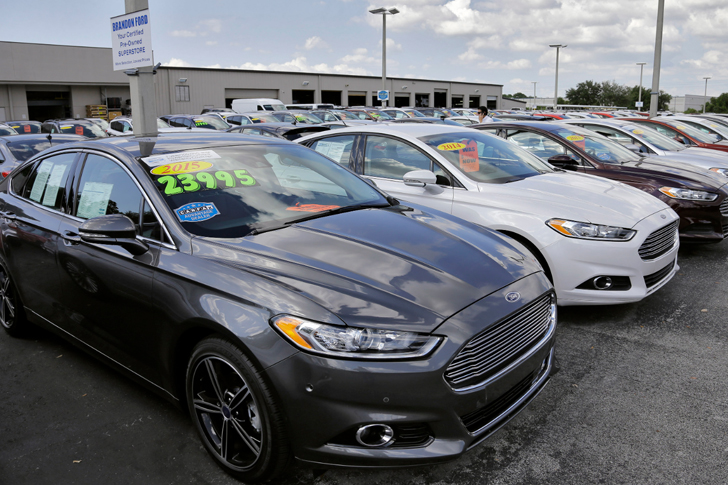How to Locate Affordable Pre-Owned Vehicles
Buying a car is a significant investment, and the decision between a new or a pre-owned vehicle can be daunting. Given the rapid depreciation of new cars—typically losing 20% to 30% of their value within the first year—a growing number of consumers are opting for used vehicles. According to a 2022 report by Edmunds, the average price of a used car is approximately $25,000, which is nearly $20,000 less than the average for new vehicles. This compelling price difference makes the pre-owned market especially appealing for budget-conscious buyers. In this article, we will explore practical, efficient strategies for locating affordable pre-owned vehicles.

Understanding the Pre-Owned Market
The pre-owned vehicle market is vast, with millions of transactions occurring annually. When searching for a used car, knowledge is power. Start by researching the best models for reliability and value retention. Websites like Consumer Reports, J.D. Power, and Kelley Blue Book offer comprehensive reviews and ratings that can guide your decision. Additionally, these platforms provide information on the average cost of various models, which can help set your budget expectations realistically.
Choosing the Right Time to Buy
Timing can significantly impact the cost of a pre-owned vehicle. Generally, the best times to buy are during the last week of December or close to the end of any quarter when dealerships are striving to meet their sales quotas. During these periods, dealers are more likely to offer attractive discounts and promotions. Furthermore, shopping on a weekday can also lead to better deals, as dealerships are usually less busy compared to weekends, providing you with more negotiation leverage.
Leveraging Online Resources
Utilizing online platforms can dramatically simplify the initial phases of your used car search. Sites like Autotrader, Cars.com, and Craigslist allow users to filter searches by price, model, mileage, and even specific features. For instance, setting up alerts on these sites can help you be one of the first to know when a desirable vehicle goes on sale. Moreover, utilizing Carfax or AutoCheck can provide essential information about the vehicle’s history, including past accidents or maintenance issues, ensuring you avoid bad investments.
Negotiating the Best Deal
Once you’ve found a vehicle that meets your needs and budget, the next step is negotiation. Start by reviewing the asking price against the Kelley Blue Book value to ensure it’s reasonable. Don’t hesitate to negotiate, citing any issues or concerns you might have discovered during your vehicle inspection or test drive. A good tip is to start your offer lower than what you are willing to pay, giving you some negotiation room. Remember, the seller is likely expecting some negotiation, so it’s unlikely you will offend anyone as long as your offer is reasonable.
Exploring Financing Options
If you’re not paying in cash, it’s crucial to explore different financing options. According to Bankrate, the average interest rate for used car loans is typically higher than that for new cars, particularly if purchasing from a private party rather than a dealership. Check with your bank or credit union for pre-approval on an auto loan, which can not only give you an edge during negotiations but also speed up the buying process. Comparing offers from several financial institutions ensures that you get the best interest rates and terms tailored to your financial situation.
Paying Attention to Total Ownership Costs
While the sticker price is often the focus when purchasing a car, considering the total cost of ownership is equally important. This includes maintenance, insurance, fuel, and depreciation. Models known for their durability and low maintenance costs, such as many from Honda and Toyota, might cost more upfront but tend to be more economical in the long run. Vehicles with a history of reliability are also generally cheaper to insure. Tools like Edmunds’ True Cost to Own calculator can be immensely helpful in estimating these expenses.
Conducting Thorough Inspections and Test Drives
Before finalizing any purchase, a thorough inspection by a certified mechanic is indispensable. This can reveal potential mechanical problems that might not be noticeable during a test drive. In addition, a comprehensive test drive can give you a feel for the car’s condition and alignment with your needs. Make sure to test the vehicle in various conditions, such as on hills, highways, and in stop-and-go traffic. This allows you to assess its performance and comfort levels comprehensively.
Finding an affordable pre-owned vehicle involves a blend of good timing, thorough research, and effective negotiation. Utilizing online tools for research and vehicle history checks, being aware of the best times to make a purchase, and understanding financing and total ownership costs can all contribute significantly to making an informed decision. By following these guidelines, you can ensure you find a reliable, budget-friendly pre-owned vehicle that meets your needs and preferences.







Recent Comments